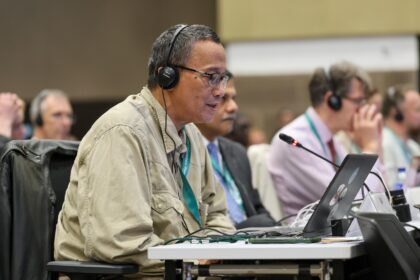[ad_1]
So, you’re a hot-shot American pilot, and you fly the F-22 Raptor. You have 500 hours under your belt, flying circles around Afghanistan, Iraq and other places of action.
But you’ve never gone up against Russia’s best, or China’s best fighter jet. In fact, you’ve never even been in a dogfight.
Professionally, they call that, the “aggressor training gap.â€
A Santa Monica, Calif.-based company wants to change that.
They can literally pit you against anybody and anything, and you don’t even have to leave your cockpit.
Imagine battling “digital†Chinese or Russian opponents, who aren’t really there — synthetic images — using using artificial intelligence and augmented reality, in real-time training.
Daniel Robinson, is founder and CEO of Red 6 Aerospace.
The former Royal Air Force Tornado pilot and graduate of the United Kingdom Fighter Weapons School — the equivalent of the US Navy’s Top Gun — was the first RAF pilot to train on the F-22 Raptor, graduating from the training program at Tyndall Air Force Base, in 2006, according to a report in Military.com.
While assigned to Langley Air Force Base, he said he observed the same thing that a Government Availability Office report found out much later: Fighters like the F-22 are not being used to their full potential, with severely limited opportunities for pilot training.
“I really identified the core of the problem that I wanted to solve, and that was, in essence, ‘How do we train?’†Robinson told Military.com.
The company, which received an investment from Lockheed Martin, has been working with AFWERX — an Air Force innovation program that partners with small businesses and academia — through a series of Small Business Innovation Research contracts.
The company expects to receive a Phase III SBIR contract soon valued between US$25 million and US$70 million, Robinson said.
Through the combination of modified hardware and software technologies Red 6 has created, pilots would wear a display technology or visor on their helmets while flying in a fighter aircraft, Military.com reported.
Artificial reality is a smart computer or machine that learns over time. Augmented reality blends the digital space with the real world — unlike virtual reality, which is all in the digital world.
“This technology works in a real airplane against artificial intelligence-driven augmented reality aircraft up in the sky, which is a fascinating thing to contemplate,†Robinson said.
“When we look through that visor, we see synthetically generated aircraft, or virtual aircraft … that are not actually really there,†he said.
The generated images are made possible by the Airborne Tactical Augmented Reality System, known as A-TARS, which works in tandem with the tactical AI made by EpiSci, Military.com reported.
The AI-driven image “looks at maneuvers and fights†in relation to a pilot, who is flying a real airplane at the time.
“Those synthetically generated aircraft are driven and controlled by artificial intelligence — so it’s the craziest thing. You have something that doesn’t exist, that you see and perceive to exist, controlled by artificial intelligence,†Robinson said.
The Air Force has worked to contract more pilots, many of whom are US military retirees, to fill the “red airâ€Â aggressor training gap, allowing more active-duty pilots to attain air-to-air training on the friendly, or “blue air,†side.
Outsourcing assault and combat training to these companies cost US$6.4 billion.
But is it enough?
Today’s pilots need to practice against an aircraft that can behave like an advanced Chinese stealth fighter — not a dated aircraft, Robinson said.
“The kind of threats that we may be called to go against in any kind of near-peer conflict are very difficult for us to simulate in training, because gone are the days when we could use [F-15 Eagles] or [F-16 Fighting Falcons] or [F/A-18 Super Hornets] to simulate things like a MiG-29 or Su-27,†Robinson said.
The training issue is compounded by years of budget cuts, alongside the “manpower, supply chains and everything that goes with it,†he told Military.com.
“With virtual reality, we disappear into an entirely virtual world, and we don’t see the surroundings around us. Augmented is a more nuanced problem to solve, because we seek to place synthetic entities into the real world around us.
“We are just overlaying digital images into the real world,†he said.
If it works, it will save the US military billions of dollars, and sharpen the skills of its fighter pilots.
Traditional US military flight training is expensive, costing about $40,000 per hour to keep an F-22 Raptor fighter jet in the air, also risky, with more than 130 service members killed in aviation accidents from 2013 to 2017, National Interest reported.Â
Just this year two F-35 Lightning II Joint Strike Fighters — the most expensive fighter aircraft ever built — were lost in training flights. Â
[ad_2]
Source link














